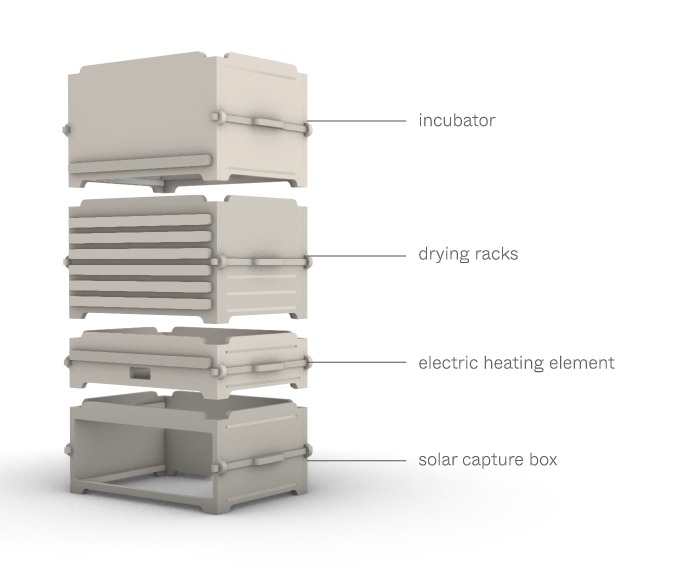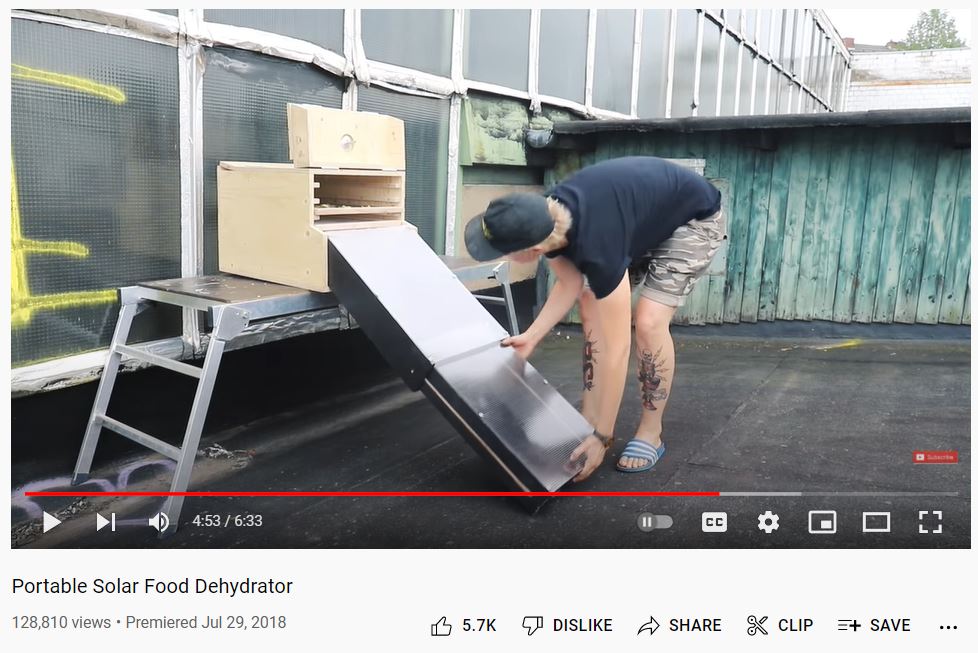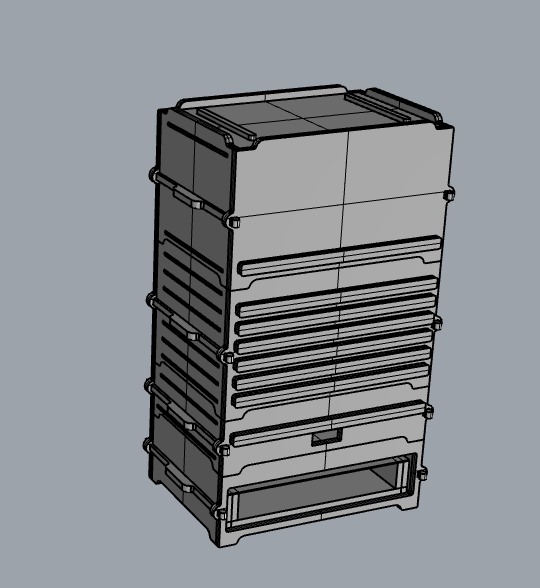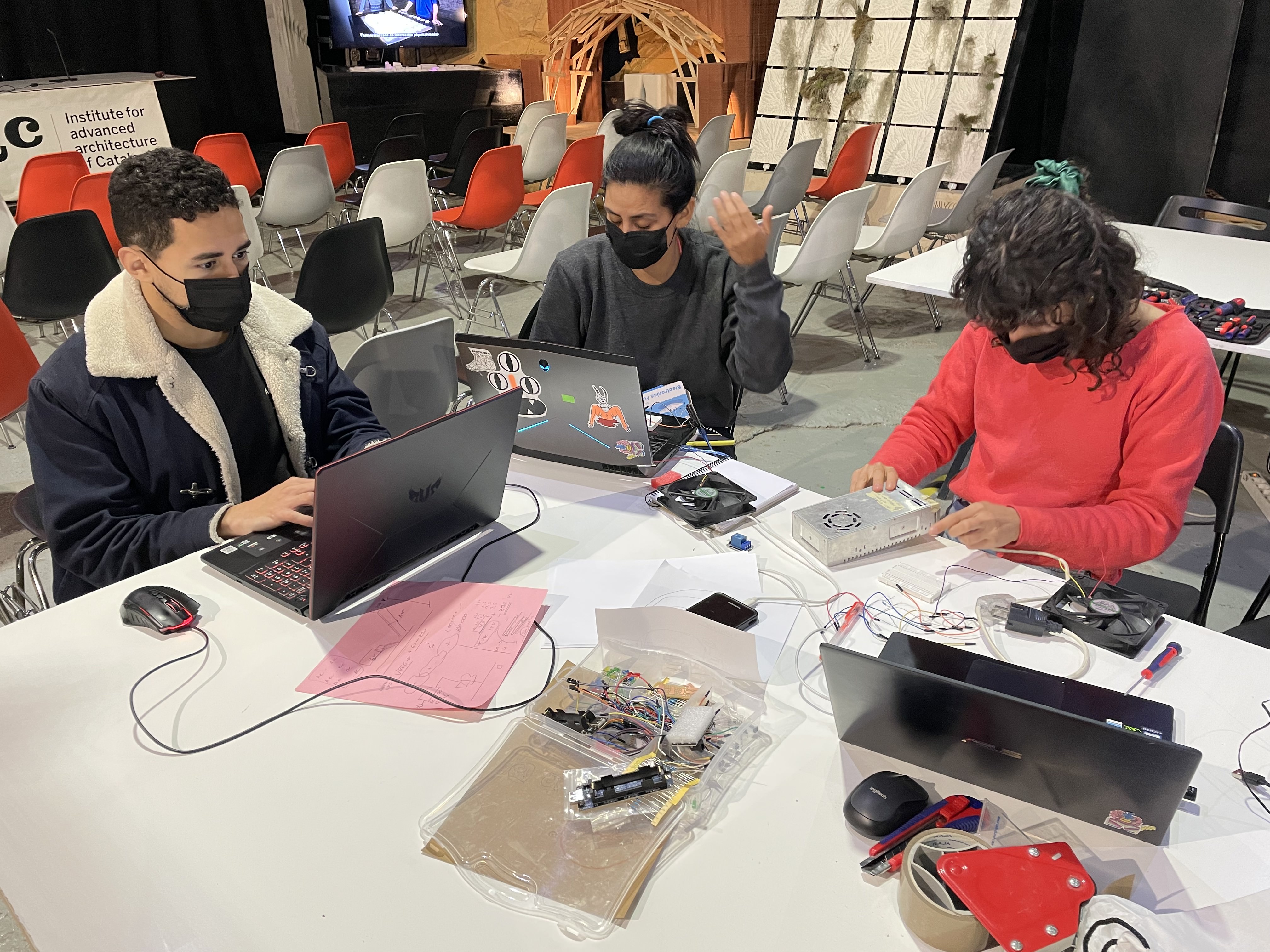
Concept
The purpose of the Hotbox is to provide an easy to assemble and reproduce alternative to energy costly dehydrators and incubators, utilising as much as possible the energy of the sun while monitoring the temperature and the humidity of the boxes to guarantee the efficiency of the devices.
Inspiration


Planning
The master plan
Elements of the hydrid dehydrator/incubator
Bases (one or the other can be used depending on the weather) (Base 1) A solar capture foldable module to use outdoors on sunny days (we were inspired by this design for the foldable part —) (Base 2) An electric heating module for inside uses
Top boxes (D) A dehydrator module with drawers (drying racks) to place the food or plants that need to be dehydreated (I) An incubator module that can be placed on top on the dehydrator module
Possible combinations: Base 1 + D // Base 1 + I // Base 1 + D + I Base 2 + D // Base 2 + I // Base 2 + D + I
Functionning: Whether the base used is the solar or the electric one, we wanted to regulate the temperature and humidity indide. To do so, we will have temperature and humidity sensors in each of the two top boxes as well as fans that will be triggered each time one of the boxes reaches defined temperature and humidity levels.
Team work: After agreeing on the general design and functionning, we divided the tasks and I was in charge with Fiorella to do the electronics part. The details of the steps we followed are all documented on the website (see link below). The main challenges for this part were: understand how to power all the different components with the right power supply, understand how the components I had never used before worked together and could be wired and programmed especially the relay and the Digital Temperature Humidity Sensor (we used a library to be able to read the sensor values), create the right logic diagram so the fans turn on when specific conditions are met in each of the two top boxes (dehydrator and incubator).

Contribution to the project
My role in the project was to provide support to the electronical and programming aspects of the project, as well as piling the documentation and gathering it all in one same storyline.
Learning Outcomes
This challenge was daunting. Unlike the previous one, here there were several skillsets that I was not confident about and thus had to ask for help several times. I also doubted myself a lot and the lack of confidence plus the pressure of turning in the assignment on time were difficult challenges to overcome. Some outcomes that I concluded are that it is better to do something simpe in a good way than to do half-ass something complex. Our project ended up being too ambitious for the time and skills we had and therefore the final outcome was not satisfactory to any of us. Additionally, the pressure did help me cram some programming functions that I did not know about into my brain but I am confident I would have gotten more out of it had I had more time to truly understand what I was doing.
To find the documentation, description and reflections, as well as the open source fabrication files click here >> Hotbox